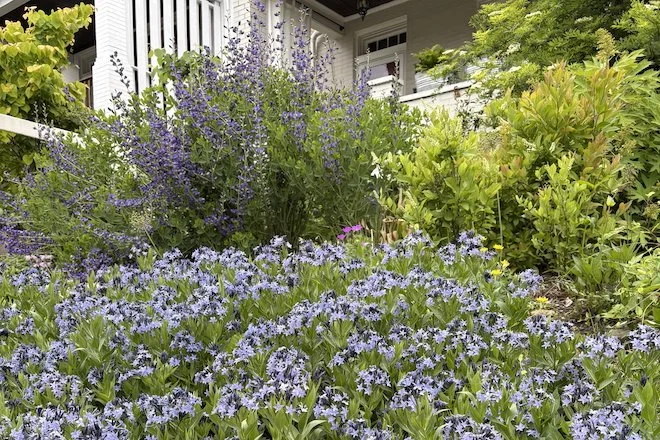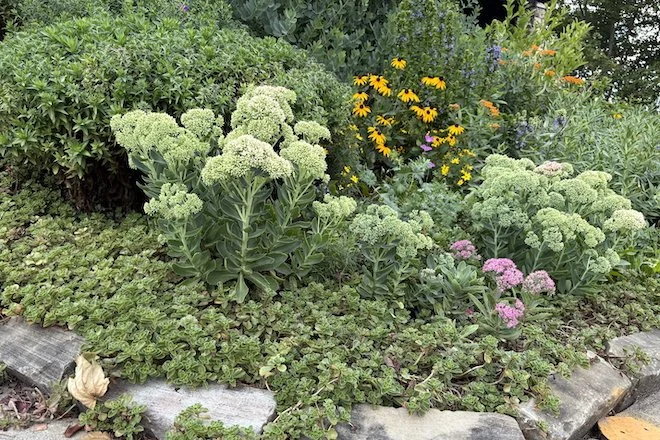This week: Making Plans for Next Year’s Garden
Hello!
As the summer winds down, it’s time to take stock of the garden. What changes, if any, should be made for next year? By evaluating it now, you can do a little fall gardening, whether it’s dividing plants you already own, taking advantage of end-of-season sales, or starting seeds outdoors. Or, you’ll be able to make a solid plan of attack for the spring. Here’s how I evaluate my own gardens.

Look Through Photos (Or Use Your Memory)
First, reflect on the year. I take a lot of flower photos, so the easiest way for me to remember what happened in the garden is to scroll through the pictures on my phone. Using my front garden as an example, things start great with spring bulbs and Redbud blossoms, and the garden stays flower-packed until July, when it turns into foliage. While it’s lush and green, it’s also a bit boring. It picks up again in late summer and fall, when Great Blue Lobelia and New England Asters start to bloom.

Create a Bloom Schedule
“Boring in July” is a good starting point, but it doesn’t tell the complete story. Why is it so dull? I have a ton of plants — a tree, shrubs, and native and non-native perennials and groundcovers. It's time to take a census and make a Bloom Schedule.
Make a spreadsheet or a table with columns for the botanical and common name, bloom color, and months April through October. List each plant as a row, and based on your observations (most accurate) or Google results (somewhat accurate), put an X in the month column when it bloomed. View an example here.

Make a Diagnosis
Now, I can look at my July column and understand the problem better. I see that I have Butterfly Weed, Threadleaf Coreopsis, Cranesbill, Missouri Evening Primrose, Black-Eyed Susans, and Garden Phlox in bloom. The Cranesbill and Coreopsis have nickel-sized flowers, and bloom off and on. The Primrose is showiest in the morning and late evening, and also blooms sporadically. I only have one Garden Phlox plant, and it is obscured at the back of the garden. While I have many flowers that bloom in July, the blooms lack volume and presence.
Formulate a Remedy
Now that I’ve determined that the Butterfly Weed and Black-Eyed Susans need some friends with bigger blooms, I will relocate the existing Garden Phlox to the front of the garden and add two more to give it more oomph. I’ll remove some of the groundcover Sedum and put Wild Petunia in its place to break up the green. And, I’ll be patient and wait for the Black-Eyed Susans and Coreopsis to spread, as they inevitably will.
Give this a try in your own garden!
Elsewhere:
Just two more days to order native trees and shrubs from the Penn State Extension Master Watershed Steward fall sale! Southwestern Pennsylvania pickup locations are in South Park and Greensburg.
Have a great week,
Julie